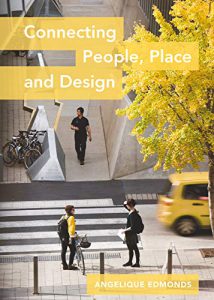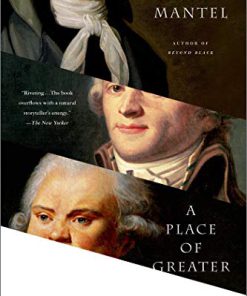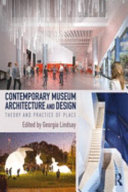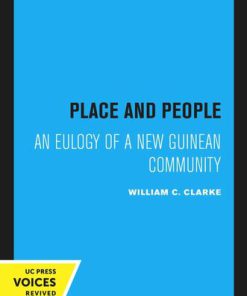Connecting People Place and Design First Edition by Edmonds 9781789381337 1789381339
$50.00 Original price was: $50.00.$25.00Current price is: $25.00.
Connecting People Place and Design First Edition Edmonds – Ebook Instant Download/Delivery ISBN(s): 9781789381320,9781789381344,9781789381337,1789381320,1789381347,1789381339

Product details:
- ISBN 10:1789381339
- ISBN 13: 9781789381337
- Author: Edmonds
Connecting People, Place and Design
Table contents:
PART 1: PLACE
Chapter 1: Significance of Place
Role of Place Premodern: Neolithic, Aboriginal, Ontological Significance
Multiple Perceptions
Enduring Change
Ancient Orientations to the Natural World
Aboriginal Australian Perspectives
Introduction to the significance of and connection to Land and the particularity of place
Living as a Response to Place
Animated Landscapes and Agency of Country
Custodial Obligations for Place and Inheritance
Moieties and Semi-Moieties
Property Rights, Investing in Relatedness and Kinship
Property Rights
Investment in Relatedness over Ownership
Neolithic Avebury
Notes
Chapter 2: Modern Shift of Perception
The Role of Ideas
Dialectic of Emergence
1. Population Pressure
2. Separation of Mind and Body and Its Consequences for Understanding of ‘Nature’
3. Rise of a New Economic Model: Flourish Capitalism and Possession in Abundance
Sequence in the Dialectic of Emergence
Conceptual Category of ‘Nature’: Separation of Humans to Stand Outside ‘Nature’
Mastery over Nature
Ecological Imperialism
Nature as Wilderness
The Role of ‘Landscape’ in the Emergence of Wilderness
Rights and Responsibilities: Biopiracy and Geo Engineering
Rights and Responsibilities
Biopiracy and Geo Engineering
Notes
Chapter 3: Contemporary Debates, Including the Importance of Place to Wellbeing and Sustainment
Place as Property
Place Branding
Places on the Screen and Online
Growing Realizations Regarding the Relationship between Place, Human Wellbeing and Social Sustainability
Social Sustainability
Social Sustainability and the Built Form
Measures of Progress
Contextualizing Critique of Economic Growth and Material Wealth
The Cost of Material Wealth
Wellbeing Measures: Individual and Collective
Wellbeing and Place
Immersion in Environment as Reframing Context More Broadly
Social Connections Enabled by Place
Differentiated Places: One Size of Wellbeing Will Not Fit All
Notes
PART 2: PEOPLE
Chapter 4: Order Imposed
Shifts for Aboriginal Australians
De-Situating of Aboriginal Australians (Both Temporally and Spatially)
Colonial Encounters with the Land in the Roper Region
Conflict over Resources
Establishment of a Christian Mission Settlement and Its Civilizing Agenda
Spatial Impact of the Mission Order
Tenacity and Continuity of Spatial Order despite the Imposed Colonial Order
Example: Maintaining Obligations for Ceremony and Marking the Passing of Life Appropriately within a Settlement Context
Customs for Marking the Death of a Kinsman
Reflections on the Contemporary Conundrum of Aboriginal Settlements
Notes
Chapter 5: Migration and Transition
Disruptions in Place: Experiences of Relocation, Migration and People’s Adaptive Cultural Practices to Transition, Establish and Create New Attachments to Place
Section One: Migration Trends over Recent Century/Decades
Types of Migrants
Barriers to Migration
Relationship between Migratory Movement and Place
Section Two: Place Attachment and Approaches to Modification, Adaptation and Transformation
Place Attachment and Challenges of Facing Disruptions in Place
Ways and Reasons People Seek to Modify the New Place
Spatial Identity (Physical Component of Attachment) and Modifications of Physical Landscape
Community Mobility and (Social Component of Attachment) Adaptation
Section Three: Contemporary Disruptions, Reasons for Migration and Geopolitical Influences
Voluntary Relocation
Maintaining Ties to the Former Home
Becoming Identified with the New Place
Involuntary Relocations
Refugee Resettlement and En-Culturation/Adaptation
Ethnic Enclaves, Transitional Places and the Making of a New Identity
Significance of the Physical Built Environment
Tourism and the Packaging of the ‘Other’
Challenges, Alienation, Inequalities and Barriers to Incorporation
Notes
Chapter 6: The Importance of Our Spatial Encounter with Difference
Section One: Transnationalism
Complex Belongings and (Multiple) Places of Attachment
Differentiated Mobility
Family and Household Composition across Dispersed Sites
Cultural Citizenship
Section Two: Why Place Matters for Attachment/Belonging/Disruption and Why Is Our Spatial Encounter with Difference Important?
An Ethical Need for an Openness to Unassimilated Others
Importance of Soft Infrastructure
Importance of Soft Infrastructure Considering Place Attachments to Green Spaces
Section Three: Consequences of Spatial Failing for Encounter of Difference
Framing of the ‘Other’
Participation and Intelligent Engagement by Design
Socially Aware Planning in Urban Design
Public Engagement in Decision-Making about the Built Environment and the Value of Design
Notes
PART 3: PARTICIPATION
Chapter 7: Participation, Context and Design
Why Participation Matters
Changing Participation Structures
The Importance of Participatory Cultures and the Link to Wellbeing
The Link between Wellbeing and Participation
Acting Together
Crowd Salad and Multi-Sector Collaboration
Collaboration Addressing Climate Change
Scale and Depth of ‘We’ (in Considering Acting Together)
Introduction to Design as a Method to Facilitate Collective Collaborations
Introduction to the Design Process
An Iterative Design Process Necessitates Ongoing Reframing and Refinement
Researching the Social and Cultural Context: Design Ethnography and Human-Centred Approaches
Section One: Designing Publics
Reimagining Forms of Collective Action and How Design Might Play a Means Towards Such Action
Social Design
Issues
Identifying Attachments
Section Two: Designing Publics – Public and Collaborative Services and Systems
Public and Collaborative Systems
Notes
Chapter 8: Design Collaboration and the Built Environment
Why a Design Approach for Multi-Sector Collaborations Regarding Place?
Urban Issues and Broad Participation
The Role of Context and Understanding Integration
Design Testing Reveals Vital Knowledge
Design-Led Engagement, Strengthening Deliberative Publics and the Design Professionals Who Lead Such Processes
How Design-Led Engagement Develops a Common Language for Engaged Public Deliberation and Develops Mutual Respect and Deeper Understanding of Other’s Perspectives
City Scale Examples
The London Collaborative
5000+ An Integrated Design Strategy for Inner Adelaide
Participation of Children and Young People
‘My Story My City’: Engaging Young Recent Arrivals
Systems
Notes
Chapter 9: Participation, Incorporation and Approaching Difference
Place Matters
People: Embrace ‘We’
Cultural Citizenship or Acknowledgement of the Context of Human Belonging
Cosmopolitanism
Tolerance and Solidarity in Diversity
Listen for What Is Common
Revealing issues as a generator of common concerns, rather than relying on ‘stakeholders’ as predetermined static identities
Considering Social Relations as Generative
Participation: Opportunity to Participate Is Critical Both for Individual Empowerment and for Strengthening Diversity of Input to Ensure Robust Quality Outcomes
The Power of Narrative
Agency and Spatial Production: Social and Intractably Political
People also search:
connecting people place and design
planting design connecting people and place
connecting people. uniting the world
connecting place at greater salem
connection to a place
You may also like…
History - Chinese History
Animals & Pets - Natural History
Taking Flight A History of Birds and People in the Heart of America 1st Edition Michael Edmonds
Uncategorized
Fiction - Historical
A Place of Greater Safety A Novel First Edition Mantel Hilary
Religion & Spirituality - Christianity
Conversational Evangelism Connecting with People to Share Jesus David Geisler Norman L Geisler
Arts - Architecture
Fiction - Literary Fiction
Machines like me And People like you First Edition Ian Mcewan
Uncategorized
Uncategorized












